Peter Ireland – 9 March, 2016
Dashper's project, though, wasn't just confined within the borders of standard art history. His sceptical eye ranged across the whole spectrum of the art industry: from art-teaching and making through art-promotion, reputation-construction and maintenance to selling and re-selling; the whole compelling and sordid business attracting the fascinated attention a stink-lily has for flies, all under the guise of a quest for beauty and truth.
Wellington
Group show
Julian Dashper and Friends
Curated by Robert Leonard
5 December 2015 - 15 May 2016
The fracturing of perceived visual reality the work of the Cubists represented at the beginning of the 20th century broke a few other things too. One of the most significant ones broken was the connection between artistic representation and the general public. There is still large number of people who continue to regard even the Cubism of over a century ago as unfathomable “modern art”. The term modern art has come to mean unfathomable. Modernism privileged the new - and trashed “the old” - and this separation between art and the public was also a new thing. This originally Modernist gap signalled a growing specialisation of art practice that in recent years has diversified with Postmodernism - a widening of the unfathomable to the immeasureable - which grows even further today with whatever historical art label it is that defines the present time (1).
This scenario is further complicated by a parallel development throughout the 20th century. Art, of course, has always been a specialist interest, and one largely confined to the rich and powerful. But since the advent of Modernism it has become ever-more specialist, which has further distanced it from the general public, almost to the point that engaging with it fully demands as much knowledge and research as might be involved in the education of a neurosurgeon or gaining a degree in the fabled rocket science. While art about art was fully established practice mid-century, there was still a sense of mission in public institutions when it came to public education. By the end of the century, though, it seemed that the only education being offered was to other insiders such as critics, curators and professional collectors.
The range and sexiness of contemporary art makes it a more attractive focus for those involved in the art world, and its volatility makes it easier for dealer and public galleries to exhibit - no “quality judgements” are required or many dots joined - and the culture generally is fixated on the now, eager to hear stories about young and emerging artists rather than the rehashed tired old stuff about tired rehashing old artists. Once you enter any historical realm it’s a lot harder to attract attention. So it’s relatively rare that any gallery risks entering the retrospective zone (2).
Even when public galleries do, there’s usually a sense that such forays are burdened by an institutional desire for an impression of authoritativeness, which most often has the effect of imposing a speed-limit on an airport runway. Under the weight of such an imposition even good material can fail to lift off. “Taking a punt” seems anathema to some unexamined sense of “professionalism” which, at best, pretty well guarantees worthy rather than interesting: exciting just seems too wild an idea to contemplate. Well, the sky isn’t going to fall in, Chicken Licken.
The late Julian Dashper’s no Grahame Sydney and so is much less likely to narrow the gap between contemporary art and the general public (3). But for anyone capable of giving this show at least some reflective time, Robert Leonard’s exhibition at the City Gallery just might.
Public gallery exhibitions are usually one of three things: an artist’s solo show; a group show around some conceptual or stylistic thread, or art movement; or a group exhibition sampling the contemporary, as the City Gallery’s Prospect series attempted to do. Leonard’s curatorial approach is seldom confined by the usual, though. He’s perhaps this country’s most imaginative and adventurous curator, and one of the few about whom it could be said unequivocally that he’s actually interested in art per se, not seeing it as merely kapok for a career. Consequently, his practice has a fearless quality not needing to ape that of most of his peers in their rather nervous attachment to the conventional, unpainted Gib-board notwithstanding. Mere difference fails to denote adventurousness. It needs intelligence too.
Julian Dashper and Friends refreshingly takes the late artist’s later production as its focus (4), but illuminates this attention imaginatively and effectively with the work of Dashper’s “friends”, New Zealand and international artists whose images he’s reworked - not merely quoted or appropriated - reacted against, or whose approach is in similar vein. It’s a roll-call as much a tribute to the curator’s intelligence as it is to the artist’s creativity: Rita Angus, Billy Apple, Daniel Buren, Fiona Connor, Colin McCahon, Dane Mitchell, Milan Mrkusich, John Nixon, Peter Robinson, John Reynolds, Marie Shannon, Imants Tillers, Peter Tyndall, Jan van der Ploeg and Gordon Walters. The result is a re-construction of Dashper’s artistic and intellectual milieu, enabling viewers to encounter Dashper’s work securely within the context of its time.
Its time was the first flush of the period known as Postmodernism. There was a sense then of artists being let out of school, freed from the serious-minded constraints of the Modernist classroom and even its dictate of “playing nicely” outside of it. What may have been going on behind the bike-sheds was suddenly out in the open, and organised play graduated to wayward playfulness. Modernism may have attempted to consign history to the dustbin of irrelevance, but after eighty years it had, dammit, accumulated a history of its own, one that Postmodern artists felt obliged to take the piss out of, with the kind of gleeful rudeness a former student might treat a teacher who, as a pre-wedding groom, might find himself bound to a lamp-post.
Postmodernism has featured a lot of this, but in cruel hindsight much of it now appears as rather lame and even desperate one-liners, and the irony it espoused as almost a tenet of faith now reads more like an earnest application for membership of the Contemporary Club than the amused employment of ironic playfulness. Besides, it was always a bit hard to swallow the piss-taking on history by those who, five minutes before, had been strongly denying that history mattered. Even in a new game, one guesses, there must still be winners and losers (5).
Dashper’s project, though, wasn’t just confined within the borders of standard art history. His sceptical eye ranged across the whole spectrum of the art industry: from art-teaching and making through art-promotion, reputation-construction and maintenance to selling and re-selling; the whole compelling and sordid business attracting the fascinated attention a stink-lily has for flies, all under the guise of a quest for beauty and truth.
What Julian Dashper and Friends reveals, two decades after Dashper’s most productive period, is just how sharp he was, and how fresh his work remains, having lost none of its original punch. He didn’t need admission to the Contemporary Club; he was a foundation member, and possibly even its natural president. (Even though, like Groucho Marx, Julian probably wouldn’t have wanted to belong to any club that would have him as a member.) His pricking of reputations and practices still hurts, and his sending-up of conventions and pretensions still resonates, with nothing either lame or desperate diminishing the force of his clear-eyed project.
One can only marvel at how simple his means were, a honed and consistent minimalism delivering maximum impact. This intellectual elegance is matched by the works themselves, most of them of extremely formal simplicity and still looking like they were made yesterday (6). It’s also mirrored by the exhibition’s installation throughout the three large spaces on the City Gallery’s ground floor. It’s rare that a show’s conceptual base is so, well, beautifully expressed by its physical presence.
Dashper’s work has long been of special interest to curator Leonard - key Dashpers in the Te Papa collection, for instance, were acquired when Leonard was a curator at the former National Art Gallery - and this commitment and continuing intellectual engagement is reflected in the show’s very readable labels. Any projection of definitiveness or authority is anathema to Leonard’s approach, and many of his label texts remain open-ended, suggesting possible readings rather than delivering judgements. It takes two to tango, and the City Gallery must take credit for fostering this unusual but immensely refreshing approach.
Julian Dashper died relatively young at 49 in 2009 and he is much missed. It’s idle to speculate on how his later work might’ve developed, but with a curator like Leonard around, the concept of “later work” becomes somewhat redundant, because his curating renders Dashper’s work ever new and fresh with superb exhibitions such as this, in the company of his Friends.
Peter Ireland
(1) A New Yorker cartoon might ask here “Is chaos good for you?”
(2) Recent honorable exceptions in Auckland have been Julia Waite’s Cubism show at the Auckland Art Gallery, and the show of Walters’ 1950s’ gouaches at Starkwhite’s, with the excellent accompanying essay by Laurence Simmons it should be noted.
(3) Incidentally, these two artists represent a crucial distinction between “contemporary art” and “art being made now”.
(4) Dashper’s earlier work is not included; what could be called the Schnabel-related pieces not perhaps quite fitting Leonard’s thesis. It’s interesting, though, to check out the Te Papa website on Daspher’s early “classic” Purple rain at Glorit, (1986, oil & conte on velvet) because the two writers quoted - Christina Barton and Charlotte Huddlestone - both position this earlier work in relation to the artist’s oeuvre pretty much as Leonard is doing with the later in the current City Gallery show.
(5) This isn’t irony, it’s sarcasm.
(6) Indeed, some of them were. The show includes recent copies of earlier copies, a situation of embarrassment for most artists but for Dashper it’s “no worries” and, in fact, a Dashper signature strike against the notion of original.
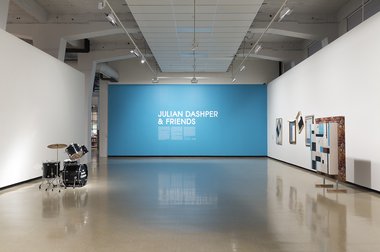
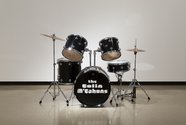
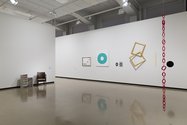
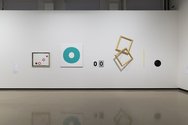
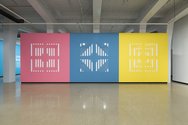
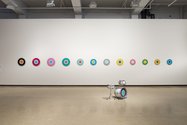
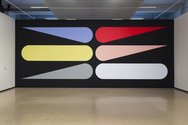
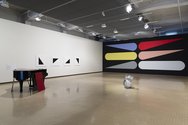
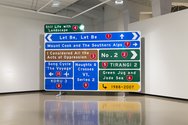
 Advertising in this column
Advertising in this column Two Rooms presents a program of residencies and projects
Two Rooms presents a program of residencies and projects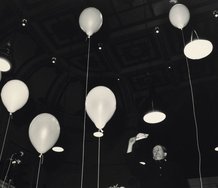
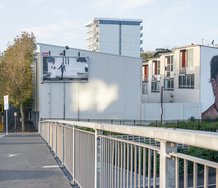
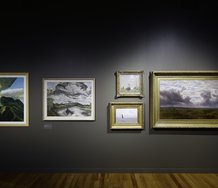

This Discussion has 0 comments.
Comment
Participate
Register to Participate.
Sign in
Sign in to an existing account.